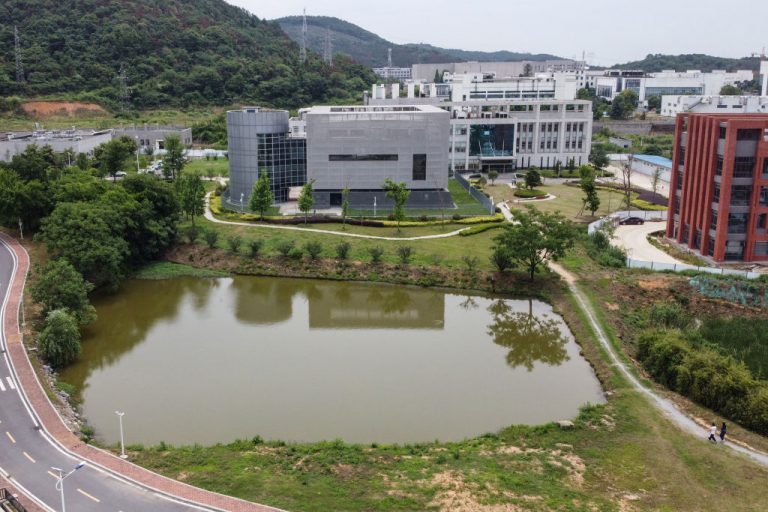A recent study by a U.S. scientist found early samples taken from Coronavirus Disease 2019 (COVID-19) patients in mainland China were contaminated with Nipah Virus, an H7N9 influenza vaccine, and 19 other virological elements.
On July 3, Dr. Steven Quay and three other researchers published a paper examining sequencing data found in five early COVID-19 patients in China. In a press release for the preprint publication of the study, the researchers said their findings, “Reveal[s] that the laboratory at the Wuhan Institute of Virology (WIV) was contaminated with a wide range of viruses, including Nipah virus genes in a cloning vector.”
The data examined was originally sequenced by the WIV itself in 2019 and were part of a study published by coronavirus gain of function research champion Shi “Batwoman” Zhengli.
Notably, Quay’s study found that “the most abundant contaminant is an undisclosed H7N9 influenza vaccine, which in one specimen is over six-times as abundant as SARS-CoV-2.” In addition, “Nipah virus gene sequences were found in infectious cloning vectors of the type used for genetic manipulation.”
There were 19 other contaminants, including “Japanese Encephalitis virus, HIV, human T-cell leukemia virus, and hepatitis delta virus.”
Success
You are now signed up for our newsletter
Success
Check your email to complete sign up
Quay commented on the study in statements made to The Epoch Times, saying, “We started fishing inside for weird things,” when they did their re-analysis of the WIV’s data. He also confirmed that they had “found genetic manipulation of the Nipah virus, which is more lethal than Ebola.”
The president of Epoch Times’ sister media, NTD Television, Joe Wang, PhD, described as having “formerly spearheaded a vaccine development program for SARS in Canada with one of the world’s leading pharmaceutical companies,” also examine Quay’s study.
According to the outlet, Wang “was able to replicate Quay’s findings on the Henipah virus,” adding Wang’s explanation “that the genetic manipulation of the virus was likely for the purposes of vaccine development.”
In the press release for Quay’s paper, he states, “It was surprising to find a menagerie of deadly viruses, strange pathogens, and even honeysuckle, plant genes in patient specimens sequenced at the WIV in December 2019, especially since this patient sequencing data has been publicly available to the entire scientific community inside of the US NIH GenBank database since February 2020.”
“The apparent widespread contamination of the laboratory at the very time the pandemic was just beginning is of course worrisome. But more important is getting answers to these questions: Why do these patient specimens contain an unreported influenza vaccine? What was the purpose of creating an undisclosed, apparently infectious clone of the deadly Nipah virus? Is this Nipah research part of another gain-of-function research project at the Wuhan Institute of Virology?”
Possible Canadian link
In May of 2019, months before the earliest dates COVID-19 was reported, Canada’s federal law enforcement, the Royal Canadian Mounted Police (RCMP), quietly escorted two Chinese researchers from the country’s own BSL4 laboratory, the National Institute of Microbiology (NML) in Winnipeg.
The dismissal of the duo, a married couple, Qiu Xiangguo and Cheng Keding, was referred to only as a “possibly policy breach,” was quickly buried in Canadian media, and flew under the radar until August when the Public Health Agency of Canada (PHAC) finally disclosed to the public with the reason for Qiu and Cheng’s dismissal: they had shipped samples of Ebola and Henipavirus to the WIV.
Henipavirus is a class of viruses that contains Nipah Virus and causes the disease known as Marburg, which the NML’s own researchers reported in a 2018 study had a 75 to 100 percent fatality rate.
Despite the scandal, PHAC nonetheless kept Qiu and Cheng employed at the NML until January of this year. In June of 2020, the Canadian Broadcasting Corporation (CBC) found the couple had actually shipped samples of 15 different viruses to the WIV.
CBC also found through Access to Information requests that Qiu had flown to China at least five times to train WIV scientists. Her trips were funded by an entity whose identity was redacted.
The broadcaster also found Qiu had added 32 publications to her name after the time she was removed from the NML, mostly involving Ebola and Marburg. Qiu also has at least eight studies published with Yan Feihu, a Chinese Academy of Sciences researcher, which is an arm of the People’s Liberation Army’s Military-Civil Fusion initiative.
CBC also noted sources at the NML, who wished to remain anonymous, saw Yan at the NML, which requires a secret-level security clearance to work at and an additional level of clearance for researchers working on fatal diseases.
Qiu and Cheng have not been seen since their 2019 removal, according to CBC. The couple were reported to own $1.7 million in homes in Winnipeg, which were said to be unoccupied for several months when the CBC interviewed neighbours. The broadcaster also said Qiu bragged to co-workers about owning a mansion in China.
The couple’s combined salary at the NML was reported to be less than $250,000 annually.

















